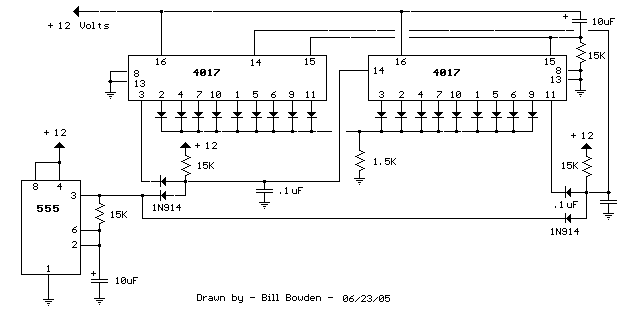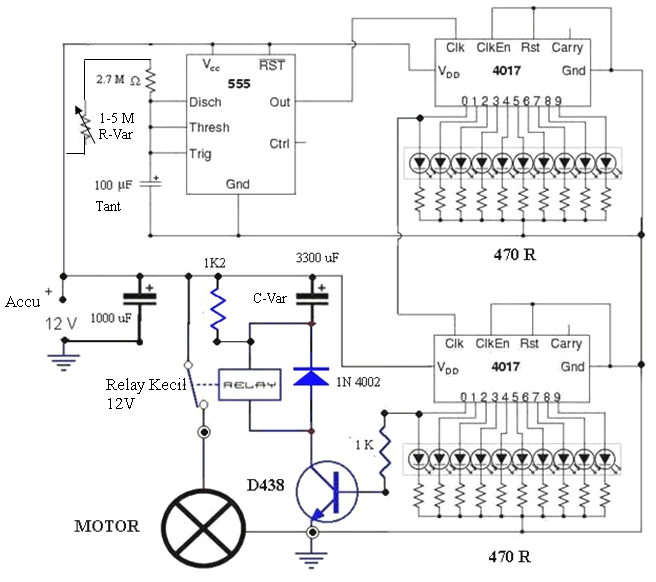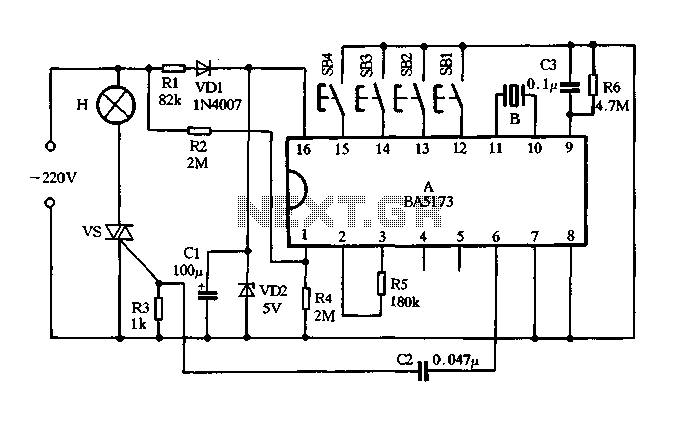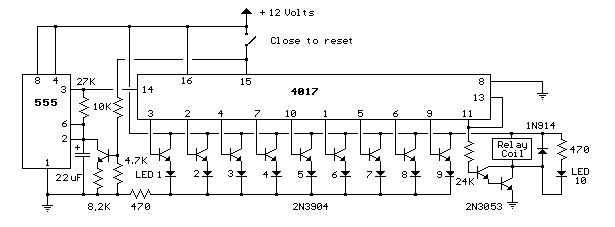
BCD THUMBWHEEL SET 99 min TIMER
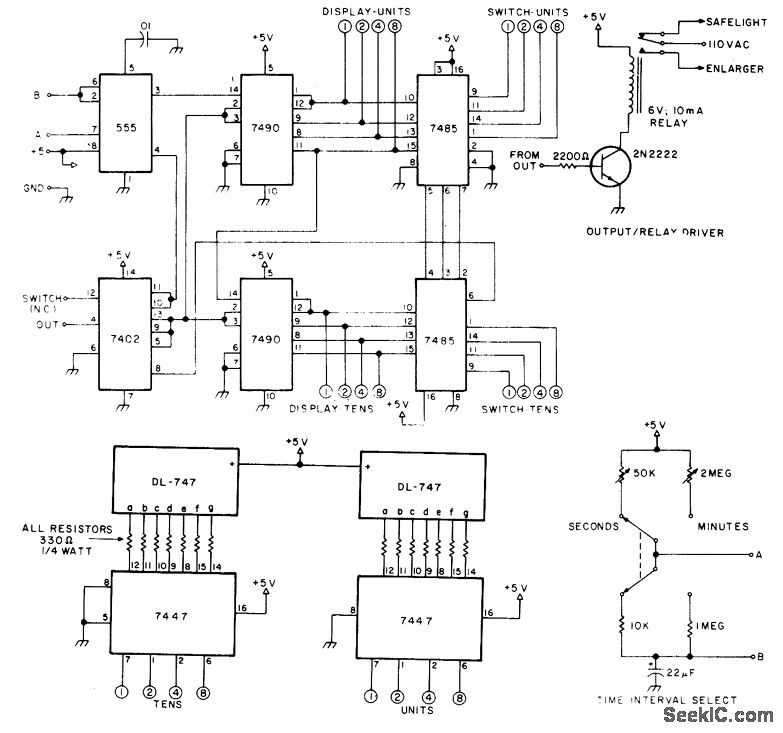
The circuit provides timing capabilities ranging from 1 second to 99 seconds and from 1 minute to 99 minutes, featuring a 2-digit LED indicator that displays the elapsed time. The desired timing interval is set using BCD thumbwheel switches. The LED readout counts up to the preset time and then automatically resets to zero. A switch allows the user to choose between seconds or minutes, with a center-off position that temporarily halts the countdown.
The described timing circuit is designed to offer versatile time interval settings, making it suitable for various applications where precise timing is essential. The use of BCD (Binary-Coded Decimal) thumbwheel switches allows for easy and intuitive input of the desired time settings, with each digit being set independently for maximum flexibility.
The 2-digit LED display serves as a straightforward visual indicator, enabling users to monitor the countdown or count-up process clearly. Upon reaching the preset time, the circuit is designed to reset automatically, ensuring that the timer is ready for the next use without requiring manual intervention.
The inclusion of a switch that toggles between seconds and minutes enhances the circuit's functionality, allowing users to select the most appropriate time unit for their specific needs. The center-off position of this switch is particularly useful for pausing the timer temporarily, providing additional control over the timing operation.
Construction details provided in the referenced article by M. I. Leavey in 73 Magazine offer insights into the assembly process, component selection, and layout considerations necessary for building this unique timer circuit. This information is invaluable for electronics enthusiasts looking to replicate or modify the design for personal or educational projects. Overall, the circuit exemplifies a practical application of timing technology, combining user-friendly features with effective performance.Provides timing in seconds to 99 s, and timing in minutes to 99 min, with 2-digit LED indicator showing elapsed time. Desired interval is set with BCD thumbwheel switches. LED readout counts up to preset time, then resets automatically to zero. Switch giving choice of seconds or minutes has center-off position that stops count temporarily for bumi
ng in portion of negative. Article gives construction details. -M. I. Leavey, Build a Unique Timer, 73 Magazine, Aug. 1977, p 66-71. 🔗 External reference
The described timing circuit is designed to offer versatile time interval settings, making it suitable for various applications where precise timing is essential. The use of BCD (Binary-Coded Decimal) thumbwheel switches allows for easy and intuitive input of the desired time settings, with each digit being set independently for maximum flexibility.
The 2-digit LED display serves as a straightforward visual indicator, enabling users to monitor the countdown or count-up process clearly. Upon reaching the preset time, the circuit is designed to reset automatically, ensuring that the timer is ready for the next use without requiring manual intervention.
The inclusion of a switch that toggles between seconds and minutes enhances the circuit's functionality, allowing users to select the most appropriate time unit for their specific needs. The center-off position of this switch is particularly useful for pausing the timer temporarily, providing additional control over the timing operation.
Construction details provided in the referenced article by M. I. Leavey in 73 Magazine offer insights into the assembly process, component selection, and layout considerations necessary for building this unique timer circuit. This information is invaluable for electronics enthusiasts looking to replicate or modify the design for personal or educational projects. Overall, the circuit exemplifies a practical application of timing technology, combining user-friendly features with effective performance.Provides timing in seconds to 99 s, and timing in minutes to 99 min, with 2-digit LED indicator showing elapsed time. Desired interval is set with BCD thumbwheel switches. LED readout counts up to preset time, then resets automatically to zero. Switch giving choice of seconds or minutes has center-off position that stops count temporarily for bumi
ng in portion of negative. Article gives construction details. -M. I. Leavey, Build a Unique Timer, 73 Magazine, Aug. 1977, p 66-71. 🔗 External reference
